[Marsha Horiuchi of Edo]
February 2, 2017 16:00
By the way, January is over, and in the lunar calendar, February 4 of the spring is in front of you.
The day before was Setsubun in bean-throwing ceremony, but I feel that spring has already reached that point.
Right now, during the New Year's Day (New Year) in China, such as China, celebrating New Year's Day in the lunar calendar.
I will meet a lot of tourists from Asia.
<Nihonbashi Information Center> NIHONBASHI INFORMATION, located in the basement of Coredo Muromachi 1, was lined with dolls and demons before the Hina Matsuri on March 3, creating a sense of the current season. It's getting warmer!
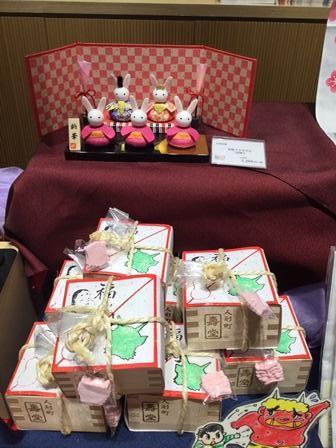
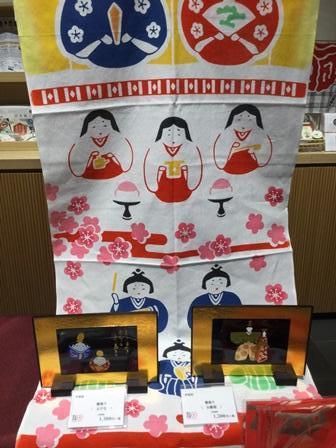
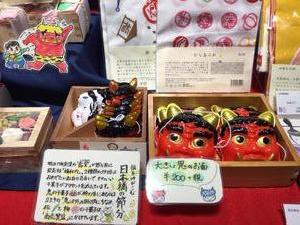
(↑ Click to increase it.)
[Sam]
February 2, 2017 12:00

Three Kawazu cherry blossoms planted in the tree-planting zone on the sunny northeast side of Chuo-ohashi Bridge on the Sumida River Terrace of Shinkawa Park bloom as soon as possible.
It is considered to be an interseed hybrid of Kanhizakura and oshima cherry, and its flower color is pink or light red, giving a strong impression of red petals compared to Yoshino cherry tree.
At the beginning of the cherry blossom season, usually in early February
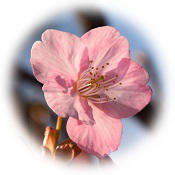 One of the features is that it begins to bloom around the time, is in full bloom about a month later, and keeps its full bloom for a certain period of time.
One of the features is that it begins to bloom around the time, is in full bloom about a month later, and keeps its full bloom for a certain period of time.
When it blooms for 6 to 8 minutes, the flowers have momentum and are considered to be beautiful flowers.
The flowering time seems to be greatly affected by the weather of the year, and I hear that it is very difficult to predict flowering.
In addition, Kawazu cherry blossoms on the Sumida River Terrace can be fully enjoyed at night with the lights of the outside lights.
[Sam]
February 2, 2017 12:00
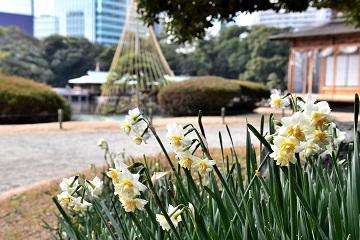 The weather is still cold, just before the spring.
The weather is still cold, just before the spring.
At this time, the number of flowers in the Hamarikyu Onshi Garden is still limited, but one of the flowers that bloom dignifiedly under the clear and soft sunlight is narcissus (Nihon narcissus).
Narcissus is a perennial plant of the family Amaryllidaceae.
Usually simply saying narcissus, "Japanese narcissus"
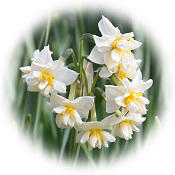 It is often used as a general term for narcissus genus, including other species and horticultural varieties.
It is often used as a general term for narcissus genus, including other species and horticultural varieties.
Japanese narcissus (Fusasaki water)
It is said to have been a variant of the Sen), which came from the Mediterranean region of origin through Silk Road and China, and became wild.
The leaves that grow from the root are flat linear.
The outer flower cover is white, and the cylindrical part called the side corolla in the middle is a yellow cup shape, and blooms in small circles.
It is characterized by a refreshing floral green scent in a clear, neat sweetness, and fragrance components such as Shinna Mick Aldehyde, benzyl alcohol, benzaldehyde, and oigenol have been reported.
Smooth and calm scent that wraps the cold of winter.
[Sam]
February 1, 2017 12:00
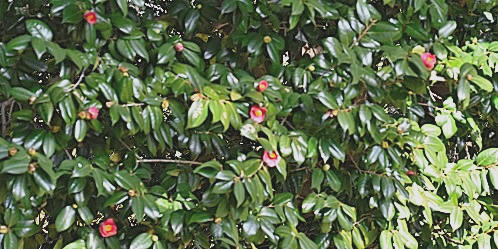
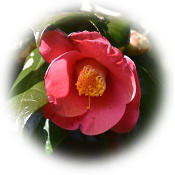 On January 24, the Tokyo Regional Meteorological Observatory reported one of the Japan Meteorological Agency's biological seasonal observation information, "Tsubaki Flowering".
On January 24, the Tokyo Regional Meteorological Observatory reported one of the Japan Meteorological Agency's biological seasonal observation information, "Tsubaki Flowering".
It is 16 days earlier than normal and 29 days later than last year.
Camellia is evergreen Takagi of the camellia family camellia.
It is also called "Japanese camellia", distinguishing from other types of camellia.
There are three wild species native to Japan: Japanese camellia, Yukitsubaki, and apple camellia.
It is said that camellia was widely spread among the general public in the middle of the Edo period after the Muromachi and Azuchi-Momoyama periods, when the tea ceremony and flower arrangement were developed, and many horticultural varieties have been produced.
In the Hamarikyu Onshi Garden, near the entrance to the Ote-mon gate, "Katsubaki" (which is considered to be a horticultural species of camellia sasanqua, but there is a strange theory) is planted near Bairin, and the Japanese camellia is seen around Koshindo Kamoba area.
The petals are funnel-shaped without flat opening, divided many branches, and are thick tree-shaped.
By the way, "Kan camellia" and "Winter camellia" are winter seasonal words, while "Hana camellia" is spring seasonal words.


 One of the features is that it begins to bloom around the time, is in full bloom about a month later, and keeps its full bloom for a certain period of time.
One of the features is that it begins to bloom around the time, is in full bloom about a month later, and keeps its full bloom for a certain period of time. The weather is still cold, just before the spring.
The weather is still cold, just before the spring. It is often used as a general term for narcissus genus, including other species and horticultural varieties.
It is often used as a general term for narcissus genus, including other species and horticultural varieties.
 On January 24, the Tokyo Regional Meteorological Observatory reported one of the Japan Meteorological Agency's biological seasonal observation information, "Tsubaki Flowering".
On January 24, the Tokyo Regional Meteorological Observatory reported one of the Japan Meteorological Agency's biological seasonal observation information, "Tsubaki Flowering".
